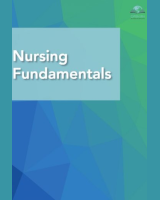Licensed under a Creative Commons Attribution 4.0 International License. To view a copy of this license, visit https://creativecommons.org/licenses/by/4.0/.
NCBI Bookshelf. A service of the National Library of Medicine, National Institutes of Health.
Open Resources for Nursing (Open RN); Ernstmeyer K, Christman E, editors. Nursing Fundamentals [Internet]. Eau Claire (WI): Chippewa Valley Technical College; 2021.
OPEN RESOURCES FOR NURSING (OPEN RN)
Table A contains commonly used NANDA-I nursing diagnoses categorized by domain. Many of these concepts will be further discussed in various chapters of this book. Nursing students may use Gordon’s Functional Health Patterns framework to cluster assessment data by domain and then select appropriate NANDA-I nursing diagnoses. For more information, refer to a nursing care planning resource.
Table A
Sample NANDA-I Diagnoses by Domain[1]
| Domain | Class & Nursing Diagnosis |
|---|---|
| Health Promotion | Health Awareness
|
| Nutrition | Ingestion
|
| Elimination and Exchange | Urinary function
|
| Activity/Rest | Sleep/Rest
|
| Perception/Cognition | Attention
|
| Self-Perception | Self-concept
|
| Role Relationship | Caregiving roles
|
| Sexuality | Sexual function
|
| Coping/Stress Tolerance | Post-trauma responses
|
| Life Principles |
|
| Safety/Protection | Infection
|
| Comfort | Physical comfort
|
| Growth/Development |
|
References
- 1.
- Herdman, T. H., & Kamitsuru, S. (Eds.). (2018). Nursing diagnoses: Definitions and classification, 2018-2020. Thieme Publishers New York. ↵.
- Appendix A: Sample NANDA-I Diagnoses - Nursing FundamentalsAppendix A: Sample NANDA-I Diagnoses - Nursing Fundamentals
Your browsing activity is empty.
Activity recording is turned off.
See more...
